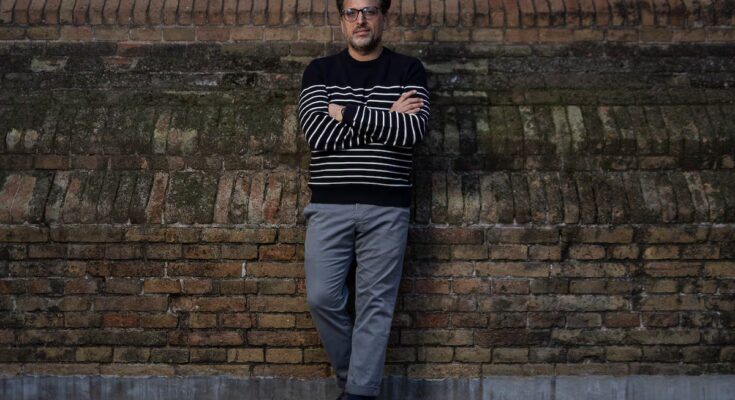The anthropologist and researcher Tomás Criado (Madrid, 44 years old) states that a welcoming city is one in which it is not necessary to assimilate. “Assimilation is always a violent project,” warns the coordinator of the Department of Umbrology of Barcelona, a speculative institution for the study and intervention on the urban life of shadows which, for two years, will carry out a series of collaborative workshops and will conclude with a Festival of Shadows in 2027.
Son of a linguist and an architect, member of the collective for functional diversity Around the chair that was part of Sol’s 15M, Criado sees in the shadow not only a philosophical answer to how everything hidden can now heal us, but a useful ally in a world suffocated by heat.
Q. Why your obsession with shadows?
R. For a long time I have been interested in bringing together two issues that worry me: a welcoming city with diverse bodies and environmental catastrophe. It’s more connected than it seems. The shadow was the place of the strange, the strange, the subway and now we have understood that that shadow is what can save us.
Q. AS?
R. In a trivial and simple way, the simplest thing to do is to grab a surface and create a shadow. This already gives relief. But the shadows do not only lead us to take charge of our darkness, of everything that modernity has left in the corner of non-thought and which now returns to us. It also forces us to rethink an architecture we despise. In a Mediterranean environment with seasonal changes, we wanted to copy Northern Europe when the shadow architectures of the Middle East, where the heat is persistent, offer us many more solutions.
Q. Especially now that climate change can no longer be hidden.
R. We live under a constant hum of heat. The climate prevents you from sleeping, whether you can live or not, and makes some bodies more exposed than others. Houses in cities are not prepared for extremely hot nights because they do not have good insulation. Climate refuges represent an intermediate solution at the public level, but the main problem is that air conditioning has been presented as an individual responsibility. Surviving the heat is a climate injustice that depends on whether you can afford air or not.
Q. Why does this injustice affect cities?
R. For its infrastructure. At the end of the 20th century, infrastructure arrived in the suburbs to put an end to the barracks, and the public transport network managed to connect those dots. Our social democracy has exploited infrastructure to generate cities with rights and that has been wonderful. Barcelona is one of the cities that has had this greatest obsession in its urban planning project: to become a city that can be explored on foot by everyone.
Q. What’s the problem?
R. We have forgotten how the city was made. Now it is a brutally infrastructural city that has produced a descending geology, with sediments and sediments of reinforced concrete. That system doesn’t allow for much otherness.
Q. In what sense?
R. I am not against the power of technicians because they are necessary, but an honest dialogue should be opened to review how one of the problems of urban planning is that everything is regulated and it is very difficult to transform space. At this time, without permission, it is not possible to plant an umbrella on the street as one can plant one on the beach.
Q. Is this why you say that cities are now gilded cages?
R. Our illusion of control of the world has become our greatest death trap. Infrastructure cities have all the climate problems, such as flooding or heat islands. Dana is a very clear example. We have four or five years of record planetary heat. Europe will be the place most affected by warming and Barcelona will be the city most affected by heat waves and the heat island effect.
Q. Would planting trees solve the problem?
R. No, cities will not be saved just by planting trees, the debate on energy production requires a Ministry of Heat and a direct action economy like in the post-war period. Trees are not the only solution for two reasons: because the city as we have built it does not allow it and because no one thinks about the necessary irrigation of those trees. Sometimes we imagine a country that we are not. The entire public debate is obsessed with tree planting. But which tree do we plant? What do we put there, the pines so as not to water them, one of the most fireproof trees there is? Who will water those trees?
Q. What do we do then?
R. If we want to think about an urban right in the shade, we should equip ourselves with a conceptual infrastructure to think about a seasonal city. Cities are made for all months of the year, but what if we thought that traffic lights changed their duration compared to summer or winter? It is a simple gesture, but here is a city that adapts to the times and its rhythms. We could start there.



